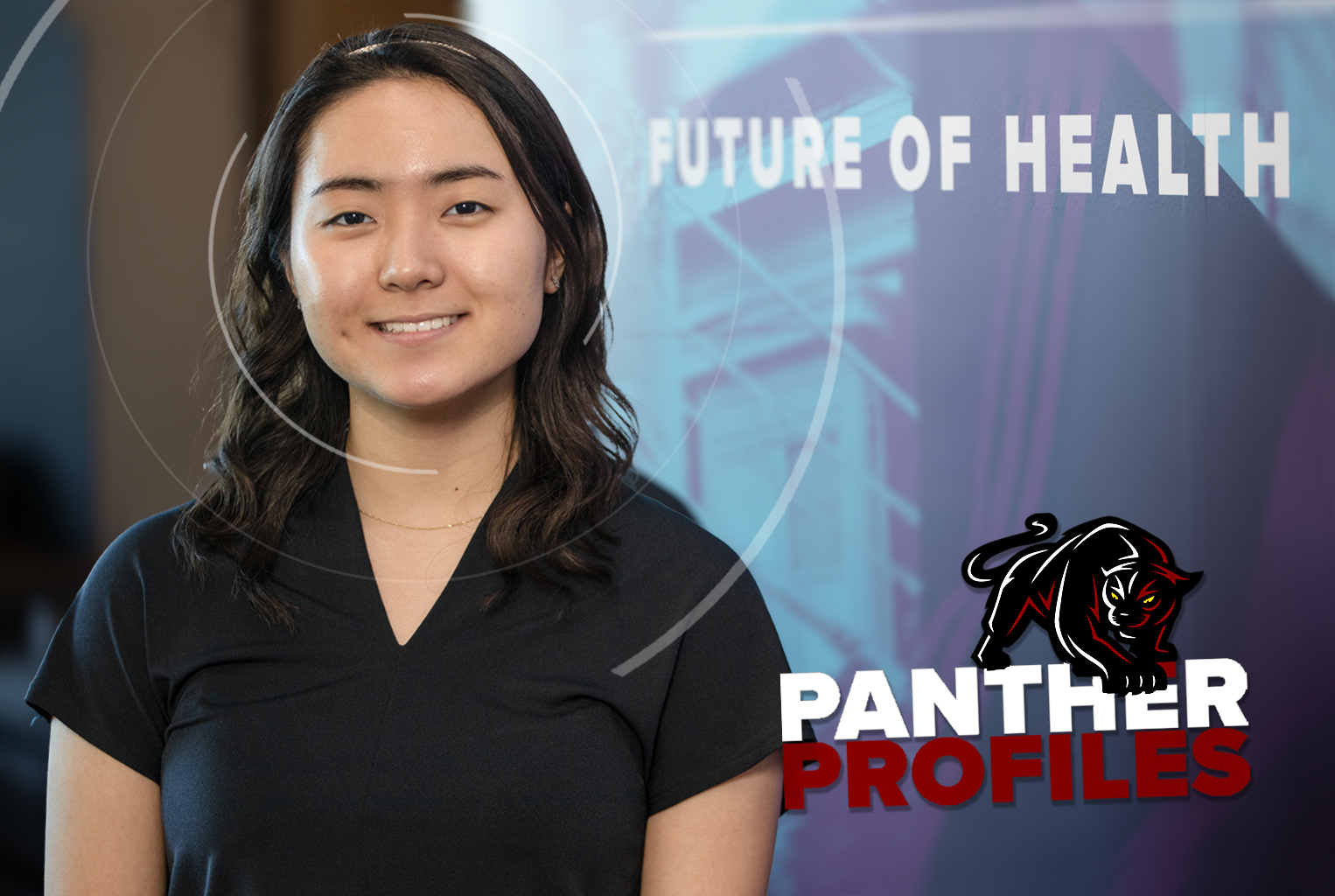
Panther Profiles are Q&A interviews that highlight Panthers of all stripes -- students, faculty, staff, alum, board members and anyone else in the campus community.
SeHan Jeong is vice president of the Student Government Association. She got involved in campus leadership early in her college career and had a front-row seat watching the campus community adapt through the COVID pandemic. More recently, she was involved in the process of developing ACPHS’ Strategic Plan for 2024-2029.
What was the first step you took toward becoming a campus leader?
As a first-year student in Fall 2019, I showed up to decorate the Student Center Atrium for American Pharmacists Month – and that's how I got involved with the American Pharmacists Association. The upper-class students that I met dragged me into the organization, and I'm glad they did. Something else that caught my eye early on was the Student Government Association (SGA) and running for a class officer position. Student leadership and government have always been points of interest since elementary school.
Something big happened in the middle of your first year at ACPHS.
As we all know, the pandemic hit. Our spring semester was cut short very abruptly. It was a very weird, difficult time; it seemed like things came to a halt. I chose not to come back in person for the fall semester.
In the spring semester of my sophomore year, I did come back, but campus looked very different. It was a little barren. Obviously, we didn't have any big activities as students, due to the restrictions. I could feel the isolation a little bit. But I did manage to still do Zoom meetings and events with some orgs.
Tell us about Fall 2021, the beginning of your third year. What difference did you see?
That was when I started my professional pharmacy years. I was expecting a heavy workload alongside my extracurriculars. But one thing that made it better was all the people that came back to campus. It was more vibrant; students seemed to want a change of pace.
Clubs and organizations were starting to hold events in person again, and a lot of people were very willing to engage. We were starting clubs, getting more involved, and connecting again. But some of the orgs were coming out of COVID with a lack of student leadership because people had graduated. The lack of continuity was a struggle for engagement, but it also served as a chance for change. This was really a time for students to re-create identities within clubs and organizations, and you saw a lot of new student leaders emerge.
Was there anything that you got to do during that time that was unexpected?
During my second year, mid-pandemic, I was on the SGA Executive Board as secretary. We had Zoom meetings on a weekly basis to support students through the COVID questions, such as the status of the campus – were classes going to be in person again? – and the day-to-day operations needed for the organizations to maintain student engagement. The student government and I weren't always sure what to do because there wasn't a lot of guidance at the time, and no one was expecting these situations. We had to make decisions that no one had to make before. But we were able to navigate through the year. It served as a moment of growth in my leadership journey.
How did you get involved in the strategic planning process?
I was invited alongside Dom Lomonaco, our SGA president. We were tasked with being a connection to the students. We were mostly involved in sharing ideas for the Quality Student Experiences pillar of the Strategic Plan and arranging town halls where we could solicit student feedback to improve the plan.
We were asked to pull upon our experiences as student members who participate in events and clubs. What I enjoyed talking about most was the “funtervention” point of the strategic plan. It stands for “fun” plus “intervention.” I saw the importance of having that balance of academic work, but also the fun, interactive parts of being at college.
And I love the word “funtervention.” It's catchy, it's sparkly, it makes you go, “hmm.”
What did the strategic planning process teach you about ACPHS?
As students, we’re at one end of receiving all the services the school provides. The strategic planning process taught me there's a lot of work that goes on behind the scenes. I learned about faculty and staff who were doing all they could for the students. It was nice to see all these people had the same vision – wanting to make this campus better for all the students, the faculty, all the community members.
Did the strategic planning process teach you anything about yourself?
It taught me that you have a stake in your community. Even if I weren't part of the student government or in a leadership position, I would still have the opportunity to speak up if there was something that I needed, something that could be an improvement for the campus.
The strategic plan was a chance to do that for all students here. And being given that opportunity was nice because other schools may not solicit student feedback, right? They may just leave it up to the administration.

